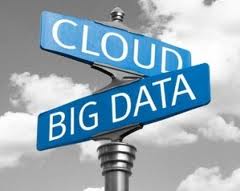Neha Prakash | mashable
Even though the cloud has only just recently hit its stride and began to expand the field for data mining and collecting, the concept of computing via a universal database is decades old.

In the 1950s, “time-sharing” — what is now considered the underlying concept of cloud computing — was used in academia and large corporations. Several clients needed to access information on separate terminals, but the mainframe technology was costly. To save money, they needed to find a way for multiple users to share CPU time. From there, it was just a hop, step and a jump away to the cloud of today.
In 1969, J.C.R. Licklider introduced the idea for an “intergalactic computer network.” Licklider developed ARPANET (Advanced Research Projects Agency Network) and hoped one day everyone could access data and programs from anywhere.
John McCarthy — the father of the term “artificial intelligence” — built upon the cloud idea, and the first uses of cloud data were for censuses and financial transactions.
But it would be a few more years until Licklider’s “intergalactic” hopes would catch up with the technology. It wasn’t until the ’90s that the Internet could support enough bandwidth to make the cloud available to the masses.
In 1997, professor Ramnath Chellappa was the first to use the term “cloud computing.” Then, in 1999, Salesforce.com became the first site to deliver applications and software over the Internet.
Amazon stepped in, in 2002, with “Web Services” (AWS) providing an advanced system of cloud services from storage to computation. And in 2006, Amazon introduced the Elastic Compute cloud (EC2) as a commercial web service. The EC2 let small companies rent computers on which they could run their own computer applications.
Salesforce.com expanded its efforts in 2007, with Force.com. The developer-based platform let companies build and run all of their business apps and website through the cloud.
But it wasn’t until 2008, when Google and Microsoft entered the playing field, that cloud use really became a widespread effort to bring the technology mainstream. The Google App Engine brought low-cost computing and storage services, popularizing the concept; by 2009, Google Apps allowed people to store documents within the cloud. Microsoft followed suit with Windows Azure, solidifying the cloud as a market that the tech giants would be expanding and competing in.
Salesforce.com continued its growth in 2010 with Database.com — again made for developers — and the cloud allowed computing services to be used on any device or platform in any programming language. Apple put a stake in the field by developing the iCloud, allowing users to sync photos, apps, music and documents across a string of devices.
But the cloud has yet to see its biggest days. The modern demand for increased data means that cloud computing will continue to grow — revenue for cloud services will approach more than $152 billion by 2014, according to IEEE.
And for the cloud, the sky is the limit.












